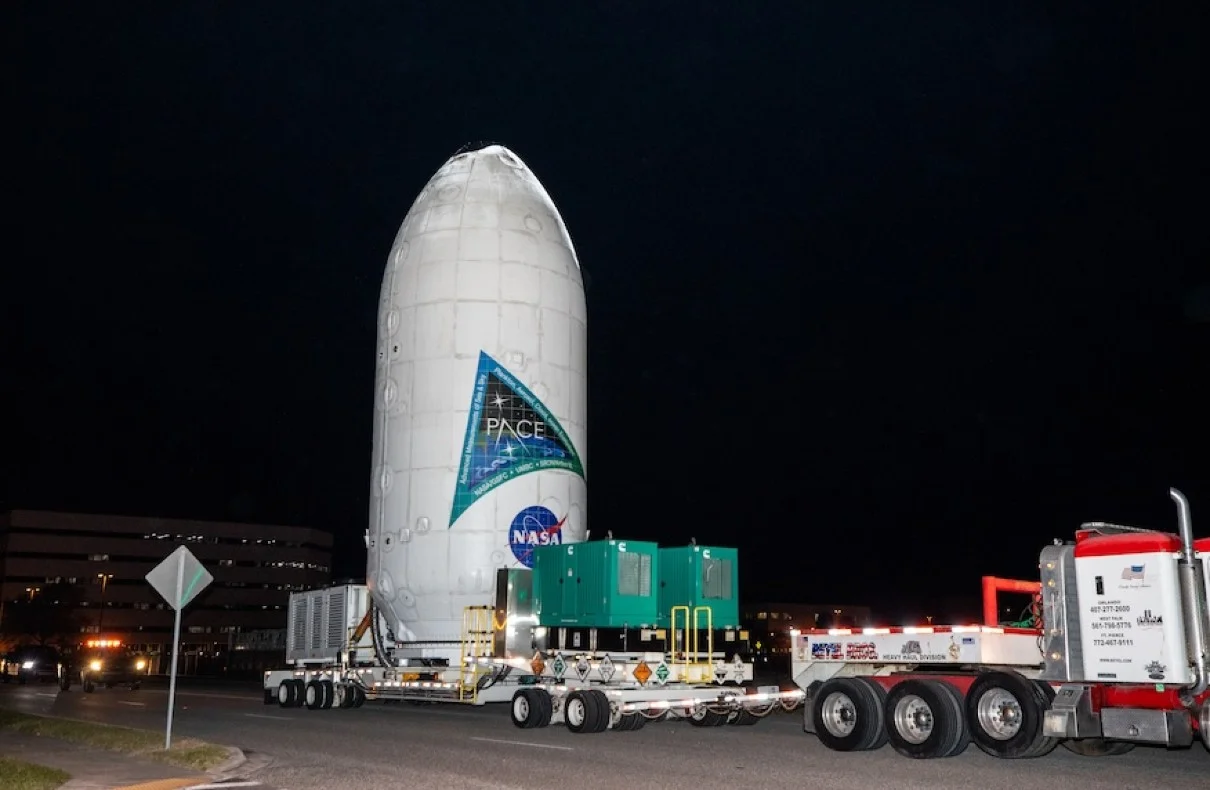
In an exciting collaboration between SpaceX and NASA, the highly anticipated launch of the Plankton, Aerosol, Cloud, ocean Ecosystem (PACE) mission is scheduled to take place on February 6th, 2024.
The PACE mission, encapsulated within a SpaceX Falcon 9 rocket, represents a pivotal moment in scientific exploration. Led by NASA, the mission’s primary objective is to study the intricate interactions between the atmosphere and the oceans. Through advanced monitoring and analysis, PACE will help scientists track pollutants, monitor phytoplankton growth, and gain a better understanding of the overall health of our planet.
Climate change is a pressing global issue, and PACE will play a crucial role in advancing our knowledge in this field. By examining the distribution and abundance of phytoplankton, PACE will allow scientists to make calculated assessments of the complex systems that drive ocean ecology. This data will contribute to a deeper understanding of the carbon cycle and how the ocean ecosystem responds to climate change. With the information collected by PACE, climate studies will be enriched for years to come.
Lunar Landing Photos: Exploring the Magnificence of Odysseus Mission
PACE carries three advanced instruments on board to facilitate its mission: the Ocean Color Instrument (OCI), Spectro-polarimeter for Planetary Exploration, and the Hyper-Angular Rainbow Polarimeter No.2. These cutting-edge tools will enable scientists to monitor clouds, aerosols, and phytoplankton growth with unprecedented precision. By tracking these crucial elements, PACE will provide valuable insights into the health of our oceans and their impact on climate.
NASA has announced the launch timings and pre-launch coverage for the PACE mission. Scheduled for launch on February 6th, 2024, at 00:03 hours EST (12:03 hours IST), the pre-launch programming will commence at 00:45 hours EST (11:15 hours IST). The launch will be broadcasted and livestreamed, allowing the public to witness this historic event.
As a key partner in the PACE mission, SpaceX will facilitate the launch of the Falcon 9 rocket carrying the PACE spacecraft. This collaboration highlights the growing importance of private-public partnerships in advancing scientific research and exploration. SpaceX’s expertise in rocket technology and successful track record will ensure a smooth and efficient launch process for PACE.
In the days leading up to the launch, meticulous preparations will take place. The Falcon 9 rocket, encapsulating the PACE spacecraft, will be rolled out to the launch pad and erected in the early morning hours. Final preparations, including loading propellants, will be conducted to ensure all systems are ready for the launch.
One of the primary objectives of the PACE mission is to study ocean color and its relationship to phytoplankton. Phytoplankton, microscopic marine plants, play a crucial role in the Earth’s ecosystem as they serve as the base of the marine food chain. By monitoring the distribution and abundance of phytoplankton, scientists can assess the health of the oceans and gain insights into the overall marine ecosystem.
Witness the Incredible Journey of NASA’s Ingenuity Mars Helicopter Mission
PACE will also focus on monitoring aerosols and clouds, which have a significant impact on weather patterns and climate. Aerosols, tiny particles suspended in the atmosphere, originate from various sources such as dust, wildfires, and human activities. These aerosols influence cloud formation and can have long-term implications for Earth’s climate stability. By studying aerosols and their interactions with the ocean, PACE will enhance our understanding of the atmosphere-ocean relationship.
The data collected by PACE will be invaluable for scientists and policymakers in their efforts to mitigate the effects of climate change. By understanding the complex interplay between the oceans, atmosphere, and climate, researchers can develop strategies to safeguard against the threat of global climate change. PACE’s findings will contribute to evidence-based decision-making and guide initiatives aimed at preserving the health of our planet.
PACE joins NASA’s fleet of Earth observation and biology-oriented satellites, amplifying our capabilities in understanding our planet’s intricate systems. The mission’s advanced instruments and comprehensive data collection will further propel our knowledge in areas such as oceanography, climate science, and ecology. The insights gained from PACE will pave the way for future research and exploration, benefiting both scientific communities and society as a whole.
